
intestinal tract into the blood in about the same manner as chlorides. Normally,
to every 100,000 parts sodium chloride.
iodine deficiency, common table salt is iodized with about 1 part sodium iodide
. To prevent
1 mg/week
, or about
each year
To form normal quantities of thyroxine, about 50 milligrams of ingested iodine
Iodine Is Required for Formation of Thyroxine
any other area of the body, with the possible exception of the adrenal cortex.
the weight of the gland each minute, which is a blood supply as great as that of
it can function in the body. The thyroid gland has a blood flow about five times
hormones within its molecule. Once the secretion has entered the follicles, it
, which contains the thyroid
that secrete into the interior of the follicles. The major constituent
in Figure 76–1, of large numbers of closed
The thyroid gland is composed, as shown
thyroxine.
ronine is about four times as potent as thyroxine, but it is present in the blood
tively the same, but they differ in rapidity and intensity of action. Triiodothy-
are functionally important. The functions of these two hormones are qualita-
roxine is eventually converted to triiodothyronine in the tissues, so that both
. However, almost all the thy-
, and 7 per cent
thyroxine
Metabolic Hormones
Synthesis and Secretion of the Thyroid
thyroid hormones, their metabolic functions, and regulation of their secretion.
The purpose of this chapter is to discuss the formation and secretion of the
, an important hormone for calcium
The thyroid gland also secretes
metabolic rate to 60 to 100 per cent above normal. Thyroid secretion is con-
below normal, and extreme excesses of thyroid secretion can increase the basal
the metabolic rate of the body. Complete lack of
tively. Both of these hormones profoundly increase
, respec-
, commonly called T
thyroxine
thyroid secretes two major hormones,
normally weighing 15 to 20 grams in adults. The
is one of the largest of the endocrine glands,
The thyroid gland, located immediately below the
Thyroid Metabolic Hormones
C
H
A
P
T
E
R
7
6
931
larynx on each side of and anterior to the trachea,
and
triiodothyronine
4
and T
3
thyroid secretion usually causes the basal metabolic rate to fall 40 to 50 per cent
trolled primarily by thyroid-stimulating hormone (TSH) secreted by the ante-
rior pituitary gland.
calcitonin
metabolism that is considered in detail in Chapter 79.
About 93 per cent of the metabolically active hormones secreted by the thyroid
gland is
triiodothyronine
in much smaller quantities and persists for a much shorter time than does
Physiologic Anatomy of the Thyroid Gland.
follicles (100 to 300 micrometers in
diameter) filled with a secretory substance called colloid and lined with cuboidal
epithelial cells
of colloid is the large glycoprotein thyroglobulin
must be absorbed back through the follicular epithelium into the blood before
in the form of iodides are required
Fate of Ingested Iodides.
Iodides ingested orally are absorbed from the gastro-

mones falls to zero.
from the cells, the rate of formation of thyroid hor-
stored thyroid gland colloid. When the peroxidase
brane of the cell or attached to it, thus providing the
The peroxidase is either located in the apical mem-
provide a potent system capable of oxidizing iodides.
, which
hydrogen peroxide
peroxidase
bining directly with the amino acid tyrosine. This oxi-
, that is then capable of com-
, either
oxidized form of iodine
The first essential step in the
thyroglobulin molecule. That is, the thyroxine and
mones. Thus, the thyroid hormones form
tyrosine amino acids, and they are the major substrates
, with a molecular weight of about
lar cells, as shown in Figure 76–2. The endoplasmic
The thyroid cells are typical protein-secreting glandu-
Triiodothyronine Formation
of Thyroxine and
pump in thyroid cells.
concentration of TSH; TSH stimulates and hypophy-
by several factors, the most important being the
centration ratio can rise to as high as 250 times. The
the thyroid gland becomes maximally active, this con-
about 30 times its concentration in the blood. When
gland, the iodide pump concentrates the iodide to
. In a normal
the cell. This is called
blood into the thyroid glandular cells and follicles. The
shown in Figure 76–2, is transport of iodides from the
The first stage in the formation of thyroid hormones,
Iodide Pump (Iodide Trapping)
hormones.
kidneys, but only after about one fifth are selectively
932
Unit XIV
Endocrinology and Reproduction
most of the iodides are rapidly excreted by the
removed from the circulating blood by the cells of the
thyroid gland and used for synthesis of the thyroid
basal membrane of the thyroid cell has the specific
ability to pump the iodide actively to the interior of
iodide trapping
rate of iodide trapping by the thyroid is influenced
sectomy greatly diminishes the activity of the iodide
Thyroglobulin, and Chemistry
Formation and Secretion of Thyroglobulin by the Thyroid Cells.
reticulum and Golgi apparatus synthesize and secrete
into the follicles a large glycoprotein molecule called
thyroglobulin
335,000.
Each molecule of thyroglobulin contains about 70
that combine with iodine to form the thyroid hor-
within the
triiodothyronine hormones formed from the tyrosine
amino acids remain part of the thyroglobulin molecule
during synthesis of the thyroid hormones and even
afterward as stored hormones in the follicular colloid.
Oxidation of the Iodide Ion.
formation of the thyroid hormones is conversion of
the iodide ions to an
nascent iodine (I
0
) or I
3
_
dation of iodine is promoted by the enzyme
and its accompanying
oxidized iodine at exactly the point in the cell where
the thyroglobulin molecule issues forth from the Golgi
apparatus and through the cell membrane into the
system is blocked or when it is hereditarily absent
Follicle
Cuboidal epithelial cells
Colloid
Red blood cells
of thyroglobulin into the follicles.
Microscopic appearance of the thyroid gland, showing secretion
Figure 76–1
T
yrosine
ER
Golgi
MIT, DIT
DIT
Iodination
and
coupling
+
I
2
I
-
I
-
H
2
O
2
Peroxidase
Peroxidase
Pinocytosis
Secretion
MIT
Proteases
Colloid
droplet
Deiodination
Thyroglobulin
precursor (T
G
)
T
G
T
G
T
3
T
4
T
3
T
4
T
3
T
4
, thyroglobulin.
, thyroxine; T
iodothyronine; T
MIT, monoiodotyrosine; DIT, diiodotyrosine; T
roxine and triiodothyronine release into the blood.
thyroxine and triiodothyronine formation, and thy-
Thyroid cellular mechanisms for iodine transport,
Figure 76–2
3
, tri-
4
G
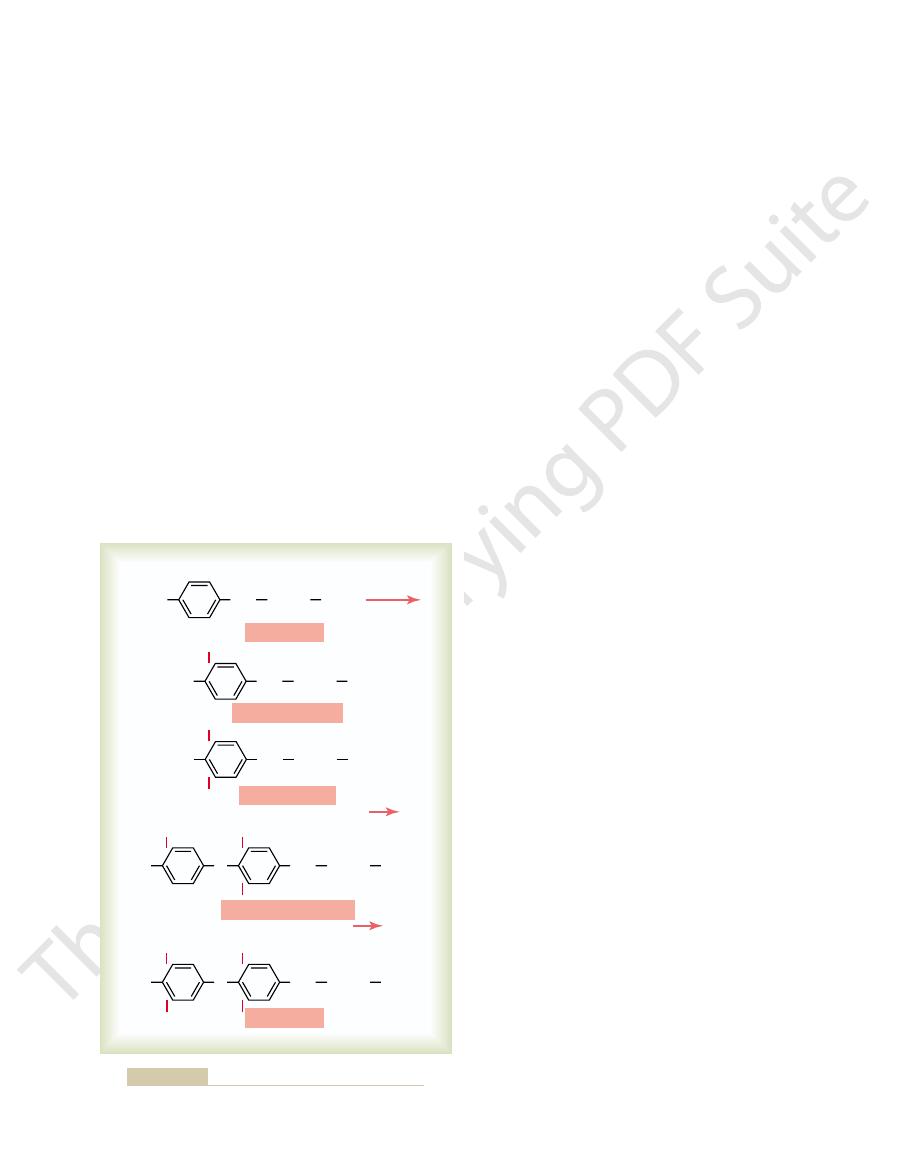
nine. Therefore, the hormone finally delivered to and
ensuing few days, about one half of the thyroxine is
7 per cent is triiodothyronine. However, during the
Daily Rate of Secretion of Thyroxine and Triiodothyronine.
cling process.
become iodine-deficient because of failure of this recy-
tal absence of this deiodinase enzyme, many persons
forming additional thyroid hormones. In the congeni-
available again for recycling within the gland for
blood. Instead, their iodine is cleaved from them by a
ulin molecules. However, they are not secreted into the
cause release of thyroxine and triiodothyronine, these
but remains monoiodotyrosine and diiodotyrosine.
thyroid cell into the surrounding capillaries. Thus, the
free form. These then diffuse through the base of the
somes mixed with the colloid. Multiple
in the cell cytoplasm
thyroid cell. Then
released. This process occurs as follows: The apical
roglobulin molecule, and then these free hormones are
blood in measurable amounts; instead, thyroxine and
Thyroglobulin itself is not released into the circulating
Triiodothyronine from the
months.
ologic effects of deficiency are not observed for several
when synthesis of thyroid hormone ceases, the physi-
of thyroid hormones for 2 to 3 months. Therefore,
triiodothyronine molecules. In this form, the thyroid
hormones has run its course, each thyroglobulin mol-
amounts of hormone. After synthesis of the thyroid
The thyroid gland is unusual
sents about one fifteenth of the final hormones.
triiodothyronine,
the thyroglobulin molecule. Or one molecule of
thyroxine
The major hormonal product of the coupling reac-
another.
next few minutes, hours, and even days, more and more
. Then, during the
iodothyronine. Tyrosine is first iodized to
important thyroid hormones, thyroxine and tri-
Figure 76–3 shows the successive stages of
thyroglobulin molecule.
cell membrane into the follicle, iodine binds with
within seconds or minutes. Therefore, almost as rapidly
enzyme (Figure 76–2) that causes the process to occur
the amino acid tyrosine. In the thyroid cells, however,
of the thyroglobulin. Oxidized iodine even in the
The binding of iodine
Iodination of Tyrosine and Formation of the Thyroid Hormones—
Chapter 76
Thyroid Metabolic Hormones
933
“Organification” of Thyroglobulin.
with the thyroglobulin molecule is called organifica-
tion
molecular form will bind directly but very slowly with
the oxidized iodine is associated with an iodinase
as the thyroglobulin molecule is released from the
Golgi apparatus or as it is secreted through the apical
about one sixth of the tyrosine amino acids within the
iodination of tyrosine and final formation of the two
monoiodoty-
rosine and then to diiodotyrosine
of the iodotyrosine residues become coupled with one
tion is the molecule
that remains part of
monoiodotyrosine couples with one molecule of
diiodotyrosine to form
which repre-
Storage of Thyroglobulin.
among the endocrine glands in its ability to store large
ecule contains up to 30 thyroxine molecules and a few
hormones are stored in the follicles in an amount suf-
ficient to supply the body with its normal requirements
Release of Thyroxine and
Thyroid Gland
triiodothyronine must first be cleaved from the thy-
surface of the thyroid cells sends out pseudopod exten-
sions that close around small portions of the colloid to
form pinocytic vesicles that enter the apex of the
lysosomes
immediately fuse with these vesicles to form digestive
vesicles containing digestive enzymes from the lyso-
proteases
among the enzymes digest the thyroglobulin mole-
cules and release thyroxine and triiodothyronine in
thyroid hormones are released into the blood.
About three quarters of the iodinated tyrosine in
the thyroglobulin never becomes thyroid hormones
During the digestion of the thyroglobulin molecule to
iodinated tyrosines also are freed from the thyroglob-
deiodinase enzyme that makes virtually all this iodine
About 93 per cent of the thyroid hormone released
from the thyroid gland is normally thyroxine and only
slowly deiodinated to form additional triiodothyro-
HO
CH
HO
CH
O
CH
HO
CH
2
CHNH
2
COOH
O
Diiodotyrosine
+
Diiodotyrosine
Monoiodotyrosine
+
Diiodotyrosine
CH
2
CHNH
2
COOH
HO
2
CHNH
2
COOH
HO
2
CHNH
2
COOH
+
I
2
+
2
CHNH
2
COOH
Iodinase
Tyrosine
Monoiodotyrosine
Diiodotyrosine
3,5,3'-Triiodothyronine
Thyroxine
Chemistry of thyroxine and triiodothyronine formation.
Figure 76–3
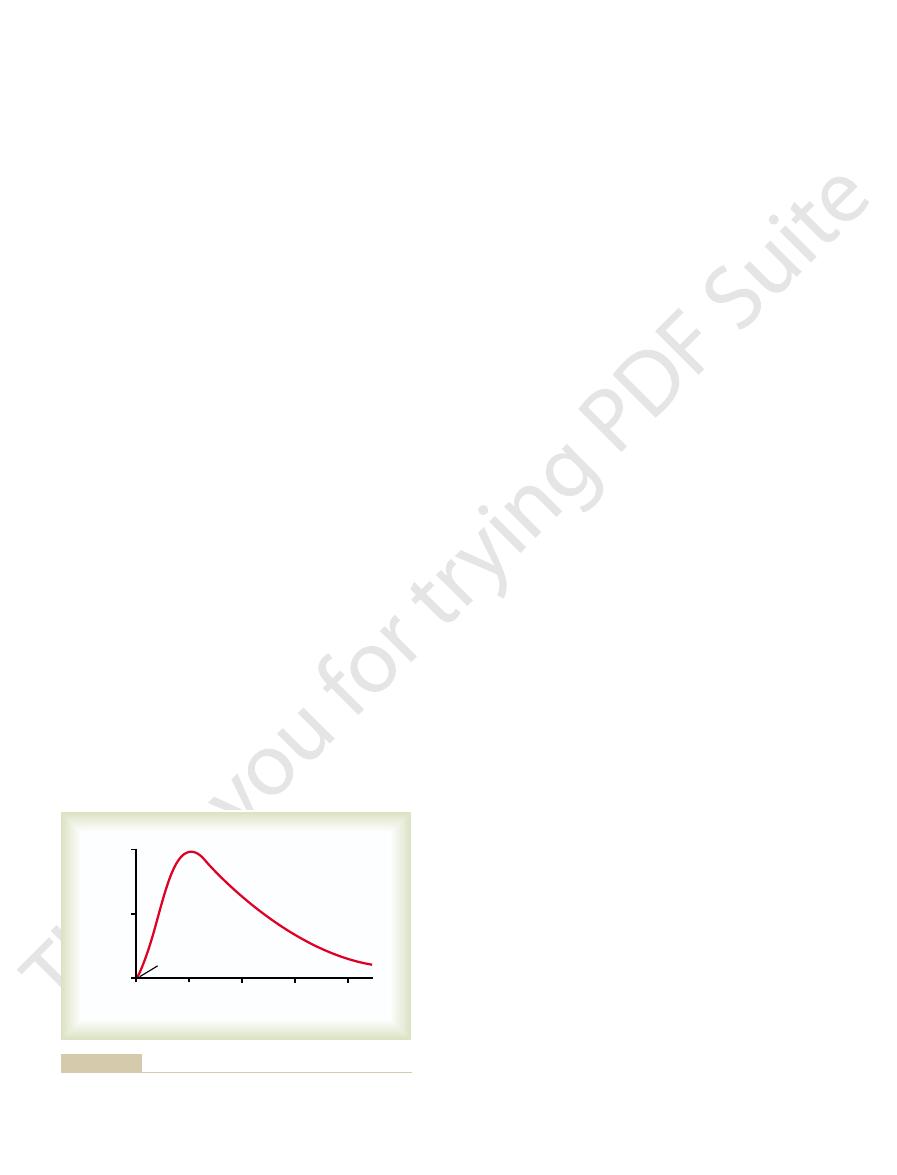
ties of almost all the tissues of the body. The basal
The thyroid hormones increase the metabolic activi-
proteins.
much as sixfold. It is believed that most, if not all, of
percentages—some only slightly, and others at least as
However, not all the proteins are increased by similar
somes to form hundreds of new intracellular proteins.
hours by RNA translation on the cytoplasmic ribo-
are formed, followed within another few minutes or
large numbers of different types of messenger RNA
activated and initiate the transcription process. Then
binding with thyroid hormone, the receptors become
elements on the DNA. On
The thyroid hormone receptor usually forms a het-
hormone receptors are either attached to the DNA
The thyroid
cules that bind with the receptors is triiodothyronine.
very high affinity for triiodothyronine. Consequently,
nine. Intracellular thyroid hormone receptors have a
almost all the thyroxine, thus forming triiodothyro-
genetic transcription, one iodide is removed from
Triiodothyronine.
functional activity throughout the body.
synthesized. The net result is generalized increase in
proteins, transport proteins, and other substances are
body, great numbers of protein enzymes, structural
(Figure 76–5). Therefore, in virtually all cells of the
The general effect of thyroid hormone is to activate
of Genes
Transcription of Large Numbers
Thyroid Hormones
themselves.
tissue cells, followed by their slow release. However,
Most of the latency and prolonged period of action
activity occurring within 2 to 3 days.
times as rapidly as those of thyroxine, with a latent
The actions of triiodothyronine occur about four
activity persists for as long as 6 weeks to 2 months.
decreases with a half-life of about 15 days. Some of the
to 12 days, as shown in Figure 76–4. Thereafter, it
roxine activity begins. Once activity does begin, it
rate can be discerned for 2 to 3 days, thereby demon-
human being, essentially no effect on the metabolic
used slowly over a period of days or weeks.
this time in the target cells themselves, and they are
iodothyronine. Therefore, they are again stored, but
iodothyronine again bind with intracellular proteins,
On entering the tissue cells, both thyroxine and tri-
released to the cells in about 1 day.
to the tissue cells about every 6 days, whereas half the
cells slowly. Half the thyroxine in the blood is released
in particular, thyroxine—are released to the tissue
proteins for the thyroid hormones, these substances—
Thyroxine and Triiodothyronine Are Released Slowly to Tissue
thyroxine-binding prealbumin
thyroxine-binding globulin
synthesized by the liver. They combine mainly with
with several of the plasma proteins, all of which are
On entering the blood, over 99 per cent of the thy-
Thyroxine and Triiodothyronine Are Bound to Plasma Proteins.
Triiodothyronine to Tissues
Transport of Thyroxine and
of about 35 micrograms of triiodothyronine per day.
used by the tissues is mainly triiodothyronine, a total
934
Unit XIV
Endocrinology and Reproduction
roxine and triiodothyronine combines immediately
and much less so with
and albumin.
Cells.
Because of high affinity of the plasma-binding
triiodothyronine—because of its lower affinity—is
the thyroxine binding more strongly than the tri-
Thyroid Hormones Have Slow Onset and Long Duration of Action.
After injection of a large quantity of thyroxine into a
strating that there is a long latent period before thy-
increases progressively and reaches a maximum in 10
period as short as 6 to 12 hours and maximal cellular
of these hormones are probably caused by their
binding with proteins both in the plasma and in the
we shall see in subsequent discussions that part of the
latent period also results from the manner in which
these hormones perform their functions in the cells
Physiologic Functions of the
Thyroid Hormones Increase the
nuclear transcription of large numbers of genes
Most of the Thyroxine Secreted by the Thyroid Is Converted to
Before acting on the genes to increase
more than 90 per cent of the thyroid hormone mole-
Thyroid Hormones Activate Nuclear Receptors.
genetic strands or located in proximity to them.
erodimer with retinoid X receptor (RXR) at specific
thyroid hormone response
the actions of thyroid hormone result from the subse-
quent enzymatic and other functions of these new
Thyroid Hormones Increase Cellular
Metabolic Activity
0
10
20
30
40
+
10
+
5
0
Basal metabolic rate
Days
Days
Thyroxine injected
by administering a single large dose of thyroxine.
Approximate prolonged effect on the basal metabolic rate caused
Figure 76–4
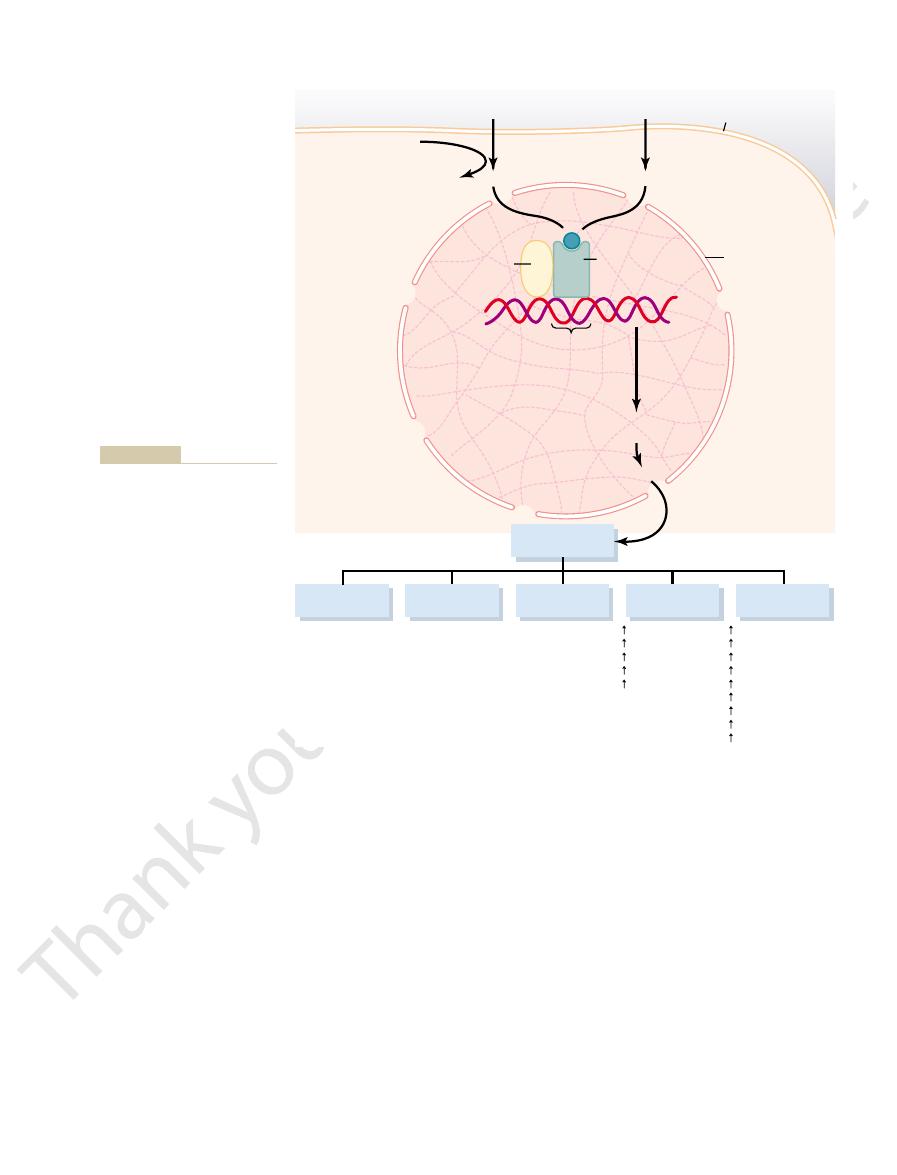
most cells to become leaky to sodium ions, which
hormone increases the body’s metabolic rate. In fact,
produced in the body, it has been suggested that this
the cell membranes of some tissues. Because this
.
This in turn increases the rate of
ATPase
Thyroid Hormones Increase Active Transport of Ions Through
the cause of the increase.
gize cellular function. However, the increase in the
formation of adenosine triphosphate (ATP) to ener-
of mitochondria, which in turn increases the rate of
Therefore, one of the principal functions of thyroxine
Furthermore, the total membrane surface area of the
animal’s body increase in size as well as number.
to an animal, the mitochondria in most cells of the
When thyroxine or triiodothyronine is given
are excited, and the activities of most of the other
people is greatly accelerated. The mental processes
catabolism is also increased. The growth rate of young
thesis is increased, at the same time the rate of protein
greatly accelerated. Although the rate of protein syn-
secreted. The rate of utilization of foods for energy is
Chapter 76
Thyroid Metabolic Hormones
935
metabolic rate can increase to 60 to 100 per cent above
normal when large quantities of the hormones are
endocrine glands are increased.
Thyroid Hormones Increase the Number and Activity of Mito-
chondria.
mitochondria increases almost directly in proportion
to the increased metabolic rate of the whole animal.
might be simply to increase the number and activity
number and activity of mitochondria could be the
result of increased activity of the cells as well as
Cell Membranes.
One of the enzymes that increases its
activity in response to thyroid hormone is Na
+
-K
+
-
transport of both sodium and potassium ions through
process uses energy and increases the amount of heat
might be one of the mechanisms by which thyroid
thyroid hormone also causes the cell membranes of
further activates the sodium pump and further
increases heat production.
-ATPase
-ATPase
Tissue blood flow
Tissue blood flow
Iodinase
Iodinase
Cell membrane
Cell membrane
Cytoplasm
Cytoplasm
Nuclear
membrane
Nuclear
membrane
Nucleus
Nucleus
Thyroid
hormone
receptor
Thyroid
hormone
receptor
Thyroid
hormone
response
Thyroid
hormone
response
Gene
transcription
Gene
transcription
mRNA
mRNA
Synthesis of
new proteins
Synthesis of
new proteins
Metabolism
Metabolism
Cardiac output
Heart rate
Heart strength
Respiration
Cardiac output
Heart rate
Heart strength
Respiration
Mitochondria
Na
+
-K
+
O
2
consumption
Glucose absorption
Gluconeogenesis
Glycogenolysis
Lipolysis
Protein synthesis
BMR
Mitochondria
Na
+
-K
+
O
2
consumption
Glucose absorption
Gluconeogenesis
Glycogenolysis
Lipolysis
Protein synthesis
BMR
Many other
systems
Many other
systems
Gene
Retinoid X
receptor
T
3
T
4
T
3
T
3
Cardiovascular
Cardiovascular
CNS
development
CNS
development
Growth
Growth
are shown. mRNA, messenger
of several different systems
of thyroid hormone on cells
response of the cell. The actions
producing the thyroid hormone
to formation of proteins, thus
either increases or decreases in
the thyroid hormone response
with a retinoid X receptor, of
ceptor, bound as a heterodimer
with the thyroid hormone re-
nated to form T
diffuse through the cell mem-
) readily
triiodothyronine (T
target cells. Thyroxine (T
Thyroid hormone activation of
Figure 76–5
4
) and
3
brane. Much of the T
4
is deiodi-
3
, which interacts
element of the gene. This causes
transcription of genes that lead
ribonucleic acid.
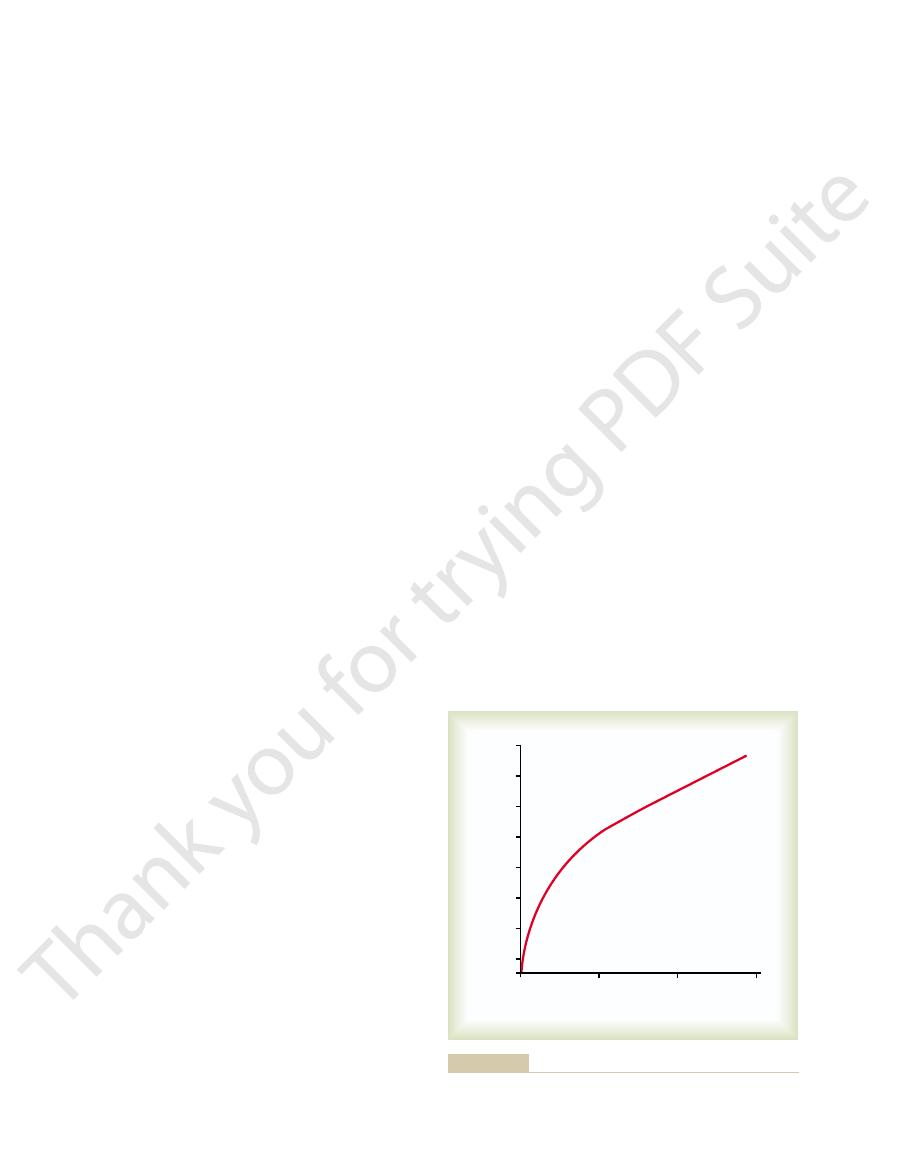
Decreased Body Weight.
cause very high basal metabolic rates.
of thyroid hormones and the basal metabolic rate.
rate falls almost to one-half normal. Figure 76–6 shows
thyroid hormone is produced, the basal metabolic
100 per cent above normal. Conversely, when no
the body, excessive quantities of the hormone can
quantities of vitamins are made available.
hormone is secreted, unless at the same time increased
tive vitamin deficiency can occur when excess thyroid
causes increased need for vitamins. Therefore, a rela-
some of the enzymes or coenzymes, thyroid hormone
of cholesterol in these lipoproteins by the liver cells.
low-density lipoprotein receptors on the liver cells,
in the bile and consequent loss in the feces. A possible
osclerosis, discussed in Chapter 68.
deposition of fat in the liver as well. The large increase
plasma concentrations of cholesterol, phospholipids,
the free fatty acids. Conversely,
phospholipids, and triglycerides in the plasma, even
ates the oxidation of free fatty acids by the cells.
other tissue element. This also increases the free fatty
rapidly from the fat tissue, which decreases the fat
of thyroid hormone. In particular, lipids are mobilized
thyroid hormone.
lism. All these effects probably result from the overall
tract, and even increased insulin secretion with its
cells, enhanced glycolysis, enhanced gluconeogenesis,
bolism, including rapid uptake of glucose by the
Thyroid hormone
Effects of Thyroid Hormone
more fully later in the chapter.
mentally deficient throughout life. This is discussed
birth, the child without a thyroid gland will remain
and the brain remains smaller than normal. Without
thyroid hormone, growth and maturation of the brain
fetal life and for the first few years of postnatal life.
at an early age, so that the duration of growth and
siderably taller at an earlier age. However, the bones
growth often occurs, causing the child to become con-
In those who are hyperthyroid, excessive skeletal
are hypothyroid, the rate of growth is greatly retarded.
is manifest mainly in growing children. In those who
In humans, the effect of thyroid hormone on growth
change of the tadpole into the frog.
on growth. For instance, it has long been known that
Thyroid hormone has both general and specific effects
Effect of Thyroid Hormone on Growth
936
Unit XIV
Endocrinology and Reproduction
thyroid hormone is essential for the metamorphic
also mature more rapidly and the epiphyses close
the eventual height of the adult may actually be
shortened.
An important effect of thyroid hormone is to
promote growth and development of the brain during
If the fetus does not secrete sufficient quantities of
both before birth and afterward are greatly retarded,
specific thyroid therapy within days or weeks after
on Specific Bodily Mechanisms
Stimulation of Carbohydrate Metabolism.
stimulates almost all aspects of carbohydrate meta-
increased rate of absorption from the gastrointestinal
resultant secondary effects on carbohydrate metabo-
increase in cellular metabolic enzymes caused by
Stimulation of Fat Metabolism.
Essentially all aspects of
fat metabolism are also enhanced under the influence
stores of the body to a greater extent than almost any
acid concentration in the plasma and greatly acceler-
Effect on Plasma and Liver Fats.
Increased thyroid
hormone decreases the concentrations of cholesterol,
though it increases
decreased thyroid secretion greatly increases the
and triglycerides and almost always causes excessive
in circulating plasma cholesterol in prolonged
hypothyroidism is often associated with severe ather-
One of the mechanisms by which thyroid hormone
decreases the plasma cholesterol concentration is to
increase significantly the rate of cholesterol secretion
mechanism for the increased cholesterol secretion is
that thyroid hormone induces increased numbers of
leading to rapid removal of low-density lipoproteins
from the plasma by the liver and subsequent secretion
Increased Requirement for Vitamins.
Because thyroid
hormone increases the quantities of many bodily
enzymes and because vitamins are essential parts of
Increased Basal Metabolic Rate.
Because thyroid
hormone increases metabolism in almost all cells of
occasionally increase the basal metabolic rate 60 to
the approximate relation between the daily supply
Extreme amounts of the hormones are required to
Greatly increased thyroid
hormone almost always decreases the body weight,
0
300
+
30
+
20
+
10
0
-
40
-
30
-
20
-
10
-
45
200
100
Basal metabolic rate
Thyroid hormones (
m
g/day)
Thyroid hormones (
m
g/day)
secretion to the basal metabolic rate.
Approximate relation of daily rate of thyroid hormone (T
Figure 76–6
4
and T
3
)

sexual function, thyroid secretion needs to be
For normal
tion by the adrenal glands.
and, therefore, increased rate of glucocorticoid secre-
liver. This leads to feedback increase in adrenocorti-
hormone. Thyroid hormone also increases the rate at
a consequence, increases the need for parathyroid
metabolic activities related to bone formation and, as
the pancreas. Also, thyroid hormone increases many
tissues for the hormones. For instance, increased thy-
endocrine glands, but it also increases the need of the
times lasting 12 to 14 hours a day.
is characteristic of hypothyroidism, with sleep some-
it is difficult to sleep. Conversely, extreme somnolence
excitable effects of thyroid hormone on the synapses,
has a feeling of constant tiredness, but because of the
central nervous system, the hyperthyroid subject often
spinal cord that control muscle tone. The tremor is an
This tremor is believed to be caused by increased reac-
fingers and noting the degree of vibration of the paper.
10 to 15 times per second. The tremor can be observed
shivering, because it occurs at the rapid frequency of
coarse tremor that occurs in Parkinson’s disease or in
hyperthyroidism is a fine muscle tremor. This is not the
Muscle Tremor.
hormone causes the muscles to become sluggish, and
excess protein catabolism. Conversely, lack of thyroid
excessive, the muscles become weakened because of
vigor, but when the quantity of hormone becomes
anxiety complexes, extreme worry, and paranoia.
ness and many psychoneurotic tendencies, such as
thyroid hormone decreases this function. The hyper-
but also often dissociates this; conversely, lack of
In general,
Excitatory Effects on the Central Nervous System.
diarrhea. Lack of thyroid hormone can cause consti-
gastrointestinal tract. Hyperthyroidism often results in
discussed, thyroid hormone increases both the rates of
increased appetite and food intake, which has been
Increased Gastrointestinal Motility.
carbon dioxide; these effects activate all the mecha-
The increased rate of metabolism
vated in hyperthyroidism 10 to 15 mm Hg and the
sure is often increased, with the systolic pressure ele-
through the tissues between heartbeats, the pulse pres-
thyroid hormone. Because of increased blood flow
The
Normal Arterial Pressure.
catabolism. Indeed, some severely thyrotoxic patients
markedly,
the heart muscle strength becomes
However, when thyroid hormone is increased
strength that occurs in mild fevers and during exercise.
secreted. This is analogous to the increase in heart
The increased enzymatic
which in turn increases the heart rate. This effect is of
cardiac output. Therefore, thyroid hormone seems to
The heart rate increases con-
output also increases, sometimes rising to 60 per cent
a consequence of the increased blood flow, cardiac
increased need for heat elimination from the body. As
tissues, thus increasing blood flow. The rate of blood
tissues. These effects cause vasodilation in most body
Increased Blood Flow and Cardiac Output.
Effect of Thyroid Hormones on the Cardiovascular System
the metabolic rate.
appetite, and this may counterbalance the change in
occur, because thyroid hormone also increases the
increases the body weight; these effects do not always
Chapter 76
Thyroid Metabolic Hormones
937
and greatly decreased hormone almost always
Increased
metabolism in the tissues causes more rapid utilization
of oxygen than normal and release of greater than
normal quantities of metabolic end products from the
flow in the skin especially increases because of the
or more above normal when excessive thyroid
hormone is present and falling to only 50 per cent of
normal in very severe hypothyroidism.
Increased Heart Rate.
siderably more under the influence of thyroid
hormone than would be expected from the increase in
have a direct effect on the excitability of the heart,
particular importance because the heart rate is one of
the sensitive physical signs that the clinician uses in
determining whether a patient has excessive or dimin-
ished thyroid hormone production.
Increased Heart Strength.
activity caused by increased thyroid hormone produc-
tion apparently increases the strength of the heart
when only a slight excess of thyroid hormone is
depressed because of long-term excessive protein
die of cardiac decompensation secondary to myocar-
dial failure and to increased cardiac load imposed by
the increase in cardiac output.
mean arterial pressure
usually remains about normal after administration of
diastolic pressure reduced a corresponding amount.
Increased Respiration.
increases the utilization of oxygen and formation of
nisms that increase the rate and depth of respiration.
In addition to
secretion of the digestive juices and the motility of the
pation.
thyroid hormone increases the rapidity of cerebration
thyroid individual is likely to have extreme nervous-
Effect on the Function of the Muscles.
Slight increase in
thyroid hormone usually makes the muscles react with
they relax slowly after a contraction.
One of the most characteristic signs of
easily by placing a sheet of paper on the extended
tivity of the neuronal synapses in the areas of the
important means for assessing the degree of thyroid
hormone effect on the central nervous system.
Effect on Sleep.
Because of the exhausting effect of
thyroid hormone on the musculature and on the
Effect on Other Endocrine Glands.
Increased thyroid
hormone increases the rates of secretion of most other
roxine secretion increases the rate of glucose metabo-
lism everywhere in the body and therefore causes a
corresponding need for increased insulin secretion by
which adrenal glucocorticoids are inactivated by the
cotropic hormone production by the anterior pituitary
Effect of Thyroid Hormone on Sexual Function.

ing the rate of TRH secretion by the hypothalamus,
Effects of Cold and Other Neurogenic Stimuli on TRH and TSH
tually leads to TSH release.
including calcium ions and diacyl glycerol, which even-
lowed by a cascade of other second messengers,
cells to produce large amounts of phospholipase C, fol-
pholipase second messenger system
pituitary cell membrane.This in turn
produce TSH is first to bind with TRH receptors in the
the TSH-secreting cells of the anterior pituitary to
The molecular mechanism by which TRH causes
greatly but is not reduced to zero.
secretion of TSH by the anterior pituitary decreases
anterior pituitary gland becomes blocked, the rate of
itary gland cells to increase their output of TSH. When
. TRH directly affects the anterior pitu-
pyroglutamyl-histidyl-
substance, a tripeptide amide—
TRH has been obtained in pure form. It is a simple
hypophysial portal blood, as explained in Chapter 74.
the median eminence, the TRH is then transported to
in the median eminence of the hypothalamus. From
, which is secreted by nerve endings
hormone (TRH)
by a hypothalamic hormone,
Anterior pituitary secretion of TSH is controlled
Hormone from the Hypothalamus
Regulated by Thyrotropin-Releasing
ger” in many other target tissues of the body, as
similar to the function of cAMP as a “second messen-
This method for control of thyroid cell activity is
thyroid glandular tissue itself.
The result is both an immediate increase in secretion
to activate protein kinase, which
mation of cAMP inside the cell. Finally, the cAMP acts
in the membrane, which increases the for-
surfaces of the thyroid cell. This then activates
with specific TSH receptors on the basal membrane
The first event in this activation is binding of TSH
from activation of the “second messenger”
is now clear that most, if not all, of these effects result
many and varied effects of TSH on the thyroid cell. It
In the past, it was difficult to explain the
Cyclic Adenosine Monophosphate Mediates the Stimulatory
develop fully.
nine into the blood within 30 minutes. The other
of TSH is to initiate proteolysis of the thyroglobulin,
The most important early effect after administration
activities of the thyroid glandular cells.
In summary, TSH increases all the known secretory
Increased size and increased secretory activity of
to form the
glandular cells, sometimes increasing the ratio of
increases the rate of “iodide trapping” in the
, which
has already been stored in the follicles, with
triiodothyronine by the thyroid gland. Its specific
in Chapter 74, increases the secretion of thyroxine and
weight of about 28,000. This hormone, also discussed
pituitary hormone, a glycoprotein with a molecular
, is an anterior
TSH, also known as
TSH (from the Anterior Pituitary Gland) Increases Thyroid Secre-
thyroid secretion. These mechanisms are as follows.
must be secreted at all times; to achieve this, specific
body, precisely the right amount of thyroid hormone
To maintain normal levels of metabolic activity in the
Hormone Secretion
Regulation of Thyroid
functions.
The action of thyroid hormone on the gonads
common, and occasionally amenorrhea results.
, which means greatly reduced bleeding, is
confusing, in the hyperthyroid woman,
greatly decreased libido. To make the picture still more
A hypothyroid woman, like a man, is likely to have
Yet, strangely enough, in other women thyroid lack
tively, excessive and frequent menstrual bleeding.
that is, respec-
In women, lack of thyroid hormone often causes
of the hormone, however, sometimes cause impotence.
hormone is likely to cause loss of libido; great excesses
approximately normal. In men, lack of thyroid
938
Unit XIV
Endocrinology and Reproduction
menorrhagia and polymenorrhea—
may cause irregular periods and occasionally even
amenorrhea.
oligomenor-
rhea
cannot be pinpointed to a specific function but prob-
ably results from a combination of direct metabolic
effects on the gonads as well as excitatory and
inhibitory feedback effects operating through the
anterior pituitary hormones that control the sexual
feedback mechanisms operate through the hypothala-
mus and anterior pituitary gland to control the rate of
tion.
thyrotropin
effects on the thyroid gland are as follows:
1. Increased proteolysis of the thyroglobulin that
resultant release of the thyroid hormones into
the circulating blood and diminishment of the
follicular substance itself
2. Increased activity of the iodide pump
intracellular to extracellular iodide concentration
in the glandular substance to as much as eight
times normal
3. Increased iodination of tyrosine
thyroid hormones
4.
the thyroid cells
5. Increased number of thyroid cells plus a change
from cuboidal to columnar cells and much
infolding of the thyroid epithelium into the
follicles
which causes release of thyroxine and triiodothyro-
effects require hours or even days and weeks to
Effect of TSH.
cyclic
adenosine monophosphate (cAMP) system of the cell.
adeny-
lyl cyclase
as a second messenger
causes multiple phosphorylations throughout the cell.
of thyroid hormones and prolonged growth of the
discussed in Chapter 74.
Anterior Pituitary Secretion of TSH Is
thyrotropin-releasing
the anterior pituitary by way of the hypothalamic-
proline-amide
the blood portal system from the hypothalamus to the
activates the phos-
inside the pituitary
Secretion.
One of the best-known stimuli for increas-

phases of thyroid activity, they slightly decrease the size
of the thyroid hormones from the storage colloid, there
concentrations. Because this is the first step in release
normal endocytosis of colloid from the follicles by the
hormones is also decreased. Even more important, the
The effect is to reduce the rate of iodide trapping, so
but often they remain decreased for only a few weeks.
level), most activities of the thyroid gland are decreased,
When iodides are present in the blood
of the glandular tissue and forming a goiter.
by the anterior pituitary gland, thus promoting growth
tremendous feedback enhancement of TSH secretion
formation of thyroglobulin. The absence of thyroxine
Propylthiouracil, like thiocyanate, does not prevent
thyroxine or triiodothyronine.
thyroid hormone from iodides and tyrosine. The mech-
lthiouracil (and other, similar compounds, such as
goiter.
greatly enlarged thyroid gland, which is called a
fore, the use of thiocyanates and some other ions to
form adequate quantities of thyroid hormones. There-
the anterior pituitary gland, which causes overgrowth of
mones in turn leads to increased secretion of TSH by
thyroid hormones. This deficiency of the thyroid hor-
cells does not stop the formation of thyroglobulin; it
The decreased availability of iodide in the glandular
iodide transport into the cell— that is, inhibition of the
cyanate (or one of the other ions as well) in high enough
nitrate ions. Therefore, the administration of thio-
can also pump thiocyanate ions, perchlorate ions, and
The same active
Thiocyanate Ions Decrease Iodide Trapping.
others, and they can be explained as follows.
The mechanism by which each of
inorganic iodides.
, and high concentrations
propylthiouracil
roid substances. The best known of these substances are
mones in the circulating body fluids.
anism of the feedback, its effect is to maintain an
anterior pituitary gland itself. Regardless of the mech-
secretion of TSH mainly by a direct effect on the
Therefore, as shown in Figure 76–7, it is probable that
itary has been separated from the hypothalamus.
falls essentially to zero. Almost all this feedback
about 1.75 times normal, the rate of TSH secretion
When the rate of thyroid hormone secretion rises to
decreases secretion of TSH by the anterior pituitary.
to Decrease Anterior Pituitary
Feedback Effect of Thyroid Hormone
ated by way of the hypothalamus.
cut, demonstrating that both of these effects are medi-
fore exert an inverse effect on the heat control center.
in secretion of TSH, perhaps because these states
affect the secretion of thyroid hormones. Excitement
output of TRH and TSH and therefore indirectly
Various emotional reactions can also affect the
Indeed, persons moving to arctic regions have been
gland, is exposure of an animal to cold. This effect
and therefore TSH secretion by the anterior pituitary
Chapter 76
Thyroid Metabolic Hormones
939
almost certainly results from excitation of the hypo-
thalamic centers for body temperature control.
Exposure of rats for several weeks to severe cold
increases the output of thyroid hormones sometimes
to more than 100 per cent of normal and can increase
the basal metabolic rate as much as 50 per cent.
known to develop basal metabolic rates 15 to 20 per
cent above normal.
and anxiety—conditions that greatly stimulate the
sympathetic nervous system—cause an acute decrease
increase the metabolic rate and body heat and there-
Neither these emotional effects nor the effect of
cold is observed after the hypophysial stalk has been
Secretion of TSH
Increased thyroid hormone in the body fluids
depressant effect occurs even when the anterior pitu-
increased thyroid hormone inhibits anterior pituitary
almost constant concentration of free thyroid hor-
Antithyroid Substances
Drugs that suppress thyroid secretion are called antithy-
thiocyanate,
of
these blocks thyroid secretion is different from the
pump that transports iodide ions into the thyroid cells
concentration can cause competitive inhibition of
iodide-trapping mechanism.
merely prevents the thyroglobulin that is formed from
becoming iodinated and therefore from forming the
the thyroid gland even though the gland still does not
block thyroid secretion can lead to development of a
Propylthiouracil Decreases Thyroid Hormone Formation.
Propy-
methimazole and carbimazole) prevents formation of
anism of this is partly to block the peroxidase enzyme
that is required for iodination of tyrosine and partly to
block the coupling of two iodinated tyrosines to form
and triiodothyronine in the thyroglobulin can lead to
Iodides in High Concentrations Decrease Thyroid Activity and
Thyroid Gland Size.
in high concentration (100 times the normal plasma
that the rate of iodination of tyrosine to form thyroid
thyroid glandular cells is paralyzed by the high iodide
is almost immediate shutdown of thyroid hormone
secretion into the blood.
Because iodides in high concentrations decrease all
of the thyroid gland and especially decrease its blood
Hypothalamus
(? increased temperature)
(Thyrotropin-releasing hormone)
Anterior pituitary
Hypertrophy
Iodine
Thyroxine
Thyroid
Increased
secretion
Thyroid-
stimulating
hormone
Cells
Increased
metabolism
Inhibits
Inhibits
?
?
?
?
Regulation of thyroid secretion.
Figure 76–7
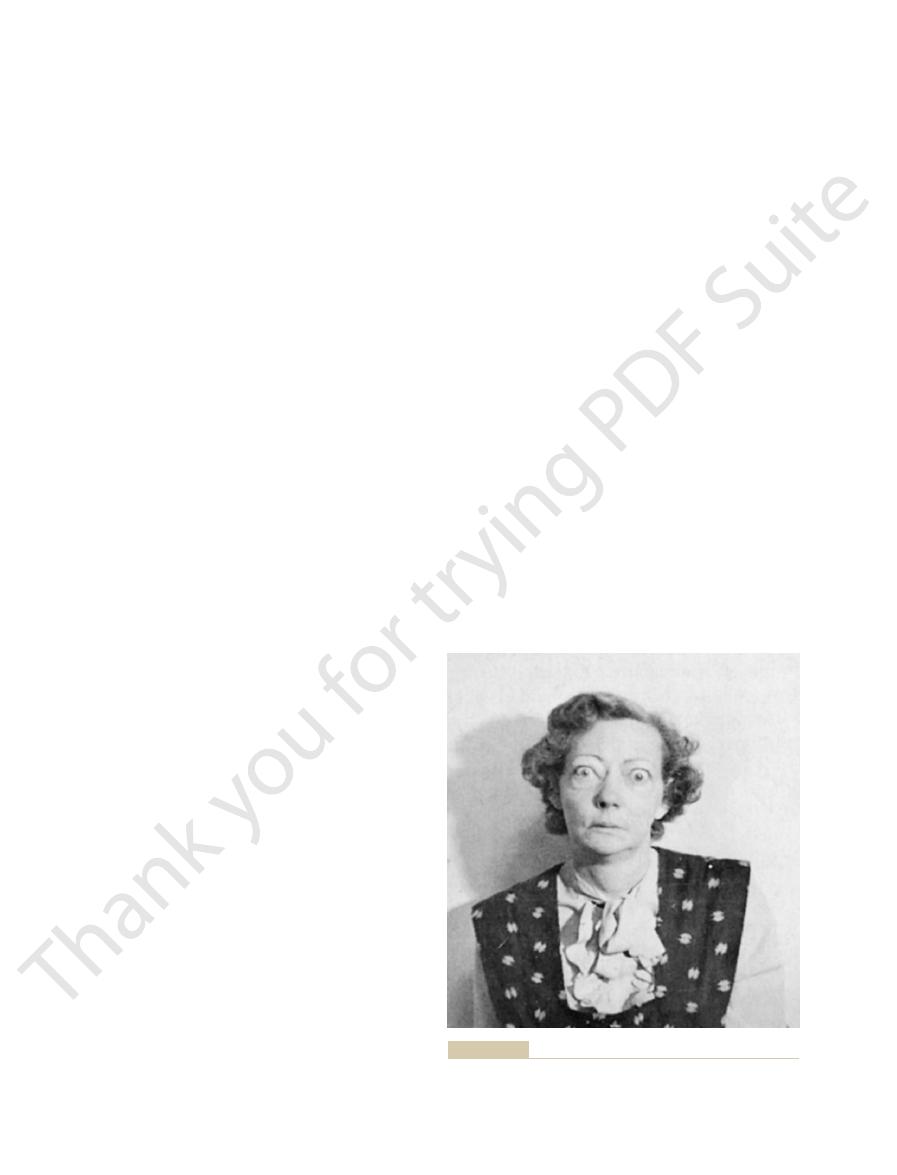
thyroidism itself, is an autoimmune process. The exoph-
is much reason to believe that exophthalmos, like hyper-
who have high concentrations of TSIs. Therefore, there
with the eye muscles. Furthermore, the concentration of
changes in the extraocular muscles. In most patients,
The cause of the protruding eyes is edematous
blinks or is asleep. As a result, the epithelial surfaces of
vision. Much more often, the eyes are damaged because
about one third of hyperthyroid patients, and the con-
thalmos.
shown in Figure 76–8. This condition is called
develop some degree of protrusion of the eyeballs, as
hands.
fatigue but inability to sleep, and (9) tremor of the
nervousness or other psychic disorders, (8) extreme
varying degrees of diarrhea, (6) muscle weakness, (7)
weight loss (sometimes as much as 100 pounds), (5)
to heat, (3) increased sweating, (4) mild to extreme
hormones: (1) a high state of excitability, (2) intolerance
The symptoms of hyperthyroidism are obvious from the
adenoma depresses the production of TSH by the pitu-
secrete large quantities of thyroid hormone, secretory
evidence of any autoimmune disease. An interesting
hyperthyroidism, in that it usually is not associated with
hormone. This is different from the more usual type of
thyroid gland itself.
cell antigens was released from the thyroid cells, and this
time in the history of the person, an excess of thyroid
developed against thyroid tissue. Presumably, at some
The antibodies that cause hyperthyroidism almost
mation of TSH.
caused by TSI in turn suppresses anterior pituitary for-
TSH. The high level of thyroid hormone secretion
long as 12 hours, in contrast to a little over 1 hour for
stimulating effect on the thyroid gland, lasting for as
and are designated TSI. They have a prolonged
with resultant development of hyperthyroidism. These
continual activation of the cAMP system of the cells,
same membrane receptors that bind TSH. They induce
the blood of almost all these patients. These substances
have actions similar to those of TSH are found in
are essentially zero. However, other substances that
plasma TSH concentrations are less than normal
are similar to those caused by excessive TSH. However,
The changes in the thyroid gland in most instances
increases its rate of secretion severalfold; radioactive
number of cells is increased greatly. Also, each cell
of the follicular cell lining into the follicles, so that the
normal size, with tremendous hyperplasia and infolding
In most patients with hyperthyroidism, the
Causes of Hyperthyroidism (Toxic Goiter, Thyrotoxicosis, Graves’
development, diagnosis, and treatment of hyperthy-
of thyroid hormone. However, some specific effects
Diseases of the Thyroid
especially to decrease the amount of bleeding.
gland to decrease the necessary amount of surgery,
reason, iodides are frequently administered to patients
caused by most of the other antithyroid agents. For this
supply, in contradistinction to the opposite effects
940
Unit XIV
Endocrinology and Reproduction
for 2 to 3 weeks before surgical removal of the thyroid
Hyperthyroidism
Most effects of hyperthyroidism are obvious from the
preceding discussion of the various physiologic effects
should be mentioned in connection especially with the
roidism.
Disease).
thyroid gland is increased to two to three times
iodine uptake studies indicate that some of these hyper-
plastic glands secrete thyroid hormone at rates 5 to 15
times normal.
rather than enhanced in almost all patients and often
are immunoglobulin antibodies that bind with the
antibodies are called thyroid-stimulating immunoglobu-
lin
certainly occur as the result of autoimmunity that has
has resulted in the formation of antibodies against the
Thyroid Adenoma.
Hyperthyroidism occasionally results
from a localized adenoma (a tumor) that develops in the
thyroid tissue and secretes large quantities of thyroid
effect of the adenoma is that as long as it continues to
function in the remainder of the thyroid gland is almost
totally inhibited because the thyroid hormone from the
itary gland.
Symptoms of Hyperthyroidism
preceding discussion of the physiology of the thyroid
Exophthalmos.
Most people with hyperthyroidism
exoph-
A major degree of exophthalmos occurs in
dition sometimes becomes so severe that the eyeball
protrusion stretches the optic nerve enough to damage
the eyelids do not close completely when the person
the eyes become dry and irritated and often infected,
resulting in ulceration of the cornea.
swelling of the retro-orbital tissues and degenerative
immunoglobulins can be found in the blood that react
these immunoglobulins is usually highest in patients
thalmos usually is greatly ameliorated with treatment of
the hyperthyroidism.
40. (Courtesy Dr. Leonard Posey.)
eyes and retraction of the superior eyelids. The basal metabolic
Patient with exophthalmic hyperthyroidism. Note protrusion of the
Figure 76–8
rate was
+

thyroid gland, the physiologic effects are the same. They
thyroid gland by irradiation, or surgical removal of the
goiter, idiopathic colloid goiter, destruction of the
hypothyroidism is due to thyroiditis, endemic colloid
Whether
especially in some varieties of turnips and cabbages.
thyroid gland. Such goitrogenic substances are found
thus also leading to TSH-stimulated enlargement of the
that have a propylthiouracil-type of antithyroid activity,
Finally, some foods contain
thus leading to iodine deficiency
, which
, so that the final thyroid
, in which the iodides
Deficient peroxidase system
, in which
Deficient iodide-trapping mechanism
formation of the thyroid hormones. Among the abnor-
In some persons with colloid goiter, the thyroid gland
being destroyed by thyroiditis.
why these glands usually are nodular, with some por-
noninflamed portions of the gland. This could explain
increased TSH secretion and progressive growth of the
causes slight hypothyroidism, which then leads to
therefore, it has been suggested that the thyroiditis
patients with idiopathic colloid goiter is not known, but
The exact cause of the enlarged thyroid gland in
hormone is depressed, as in endemic colloid goiter.
thyroid hormones, but more frequently, the secretion of
in people who do not have iodine deficiency. These
Idiopathic Nontoxic Colloid Goiter.
to 10 to 20 times normal size.
tremendous in size, and the thyroid gland may increase
duction by the anterior pituitary. The follicles become
fore does not cause the normal suppression of TSH pro-
of iodine, thyroxine and triiodothyronine production
the gland grows larger and larger. But because of lack
amounts of thyroglobulin colloid into the follicles, and
to secrete excessively large quantities of TSH. The TSH
TSH by the anterior pituitary; this causes the pituitary
result, no hormone is available to inhibit production of
duction of both thyroxine and triiodothyronine. As a
goiters is the following: Lack of iodine prevents pro-
The mechanism for development of large endemic
endemic goiters.
extremely large thyroid glands, called
tity. Therefore, in the days before iodized table salt,
the United States, insufficient iodine is present in the
Swiss Alps, the Andes, and the Great Lakes region of
hormone. In certain areas of the world, notably in the
each year
term “goiter” means a greatly enlarged thyroid gland.
The
Endemic Colloid Goiter Caused by Dietary Iodide Deficiency.
as follows.
opment of enlarged thyroid glands, called
hypothyroidism also occur, often associated with devel-
secretion of thyroid hormone. Several other types of
fibrosis of the gland, with resultant diminished or absent
mation.This causes progressive deterioration and finally
autoimmune “thyroiditis,” which means thyroid inflam-
it. The thyroid glands of most of these patients first have
tiated by autoimmunity against the thyroid gland, but
Hypothyroidism, like hyperthyroidism, probably is ini-
to those of hyperthyroidism, but there are a few
The effects of hypothyroidism, in general, are opposite
several weeks later. If the patient is still hyperthyroid,
is given to the patient, whose condition is reassessed
thyroid gland. Usually 5 millicuries of radioactive iodine
active, it can destroy most of the secretory cells of the
1 day after injection. If this injected iodine is radio-
absorbed by the hyperplastic, toxic thyroid gland within
Treatment of the Hyperplastic Thyroid Gland with
modern procedures, operative mortality was 1 in 25.
the better hospitals, whereas before development of
dures, the operative mortality is less than 1 in 1000 in
supply to diminish. By using these preoperative proce-
normal. Then, administration of high concentrations of
propylthiouracil, usually for several weeks, until the
before the operation. This is done by administering
most of the thyroid gland. In general, it is desirable to
The most direct
Physiology of Treatment in Hyperthyroidism.
radioimmunoassay. This is usually high in
3. The concentration of TSI is measured by
of TSH is so completely suppressed by the
type of thyrotoxicosis, anterior pituitary secretion
measured by radioimmunoassay. In the usual
2. The concentration of TSH in the plasma is
1. The basal metabolic rate is usually increased to
using appropriate radioimmunoassay procedures.
direct measurement of the concentration of “free” thy-
hyperthyroidism, the most accurate diagnostic test is
For the usual case of
Diagnostic Tests for Hyperthyroidism.
Chapter 76
Thyroid Metabolic Hormones
941
roxine (and sometimes triiodothyronine) in the plasma,
Other tests that are sometimes used are as follows:
+30
to
+60 in severe hyperthyroidism.
large amounts of circulating thyroxine and
triiodothyronine that there is almost no plasma
TSH.
thyrotoxicosis but low in thyroid adenoma.
treatment for hyperthyroidism is surgical removal of
prepare the patient for surgical removal of the gland
basal metabolic rate of the patient has returned to
iodides for 1 to 2 weeks immediately before operation
causes the gland itself to recede in size and its blood
Radioactive Iodine
Eighty to 90 per cent of an injected dose of iodide is
additional doses are administered until normal thyroid
status is reached.
Hypothyroidism
physiologic mechanisms peculiar to hypothyroidism.
immunity that destroys the gland rather than stimulates
thyroid goiter,
As pointed out in the discussion of iodine metabolism,
about 50 milligrams of iodine are required
for the formation of adequate quantities of thyroid
soil for the foodstuffs to contain even this minute quan-
many people who lived in these areas developed
then stimulates the thyroid cells to secrete tremendous
does not occur in the thyroglobulin molecule and there-
Enlarged thyroid glands
similar to those of endemic colloid goiter can also occur
goitrous glands may secrete normal quantities of
most of these patients show signs of mild thyroiditis;
tions of the gland growing while other portions are
has an abnormality of the enzyme system required for
malities often encountered are the following:
1.
iodine is not pumped adequately into the thyroid
cells
2.
are not oxidized to the iodine state
3. Deficient coupling of iodinated tyrosines in the
thyroglobulin molecule
hormones cannot be formed
4. Deficiency of the deiodinase enzyme
prevents recovery of iodine from the iodinated
tyrosines that are not coupled to form the thyroid
hormones (this is about two thirds of the iodine),
goitrogenic substances
Physiologic Characteristics of Hypothyroidism.
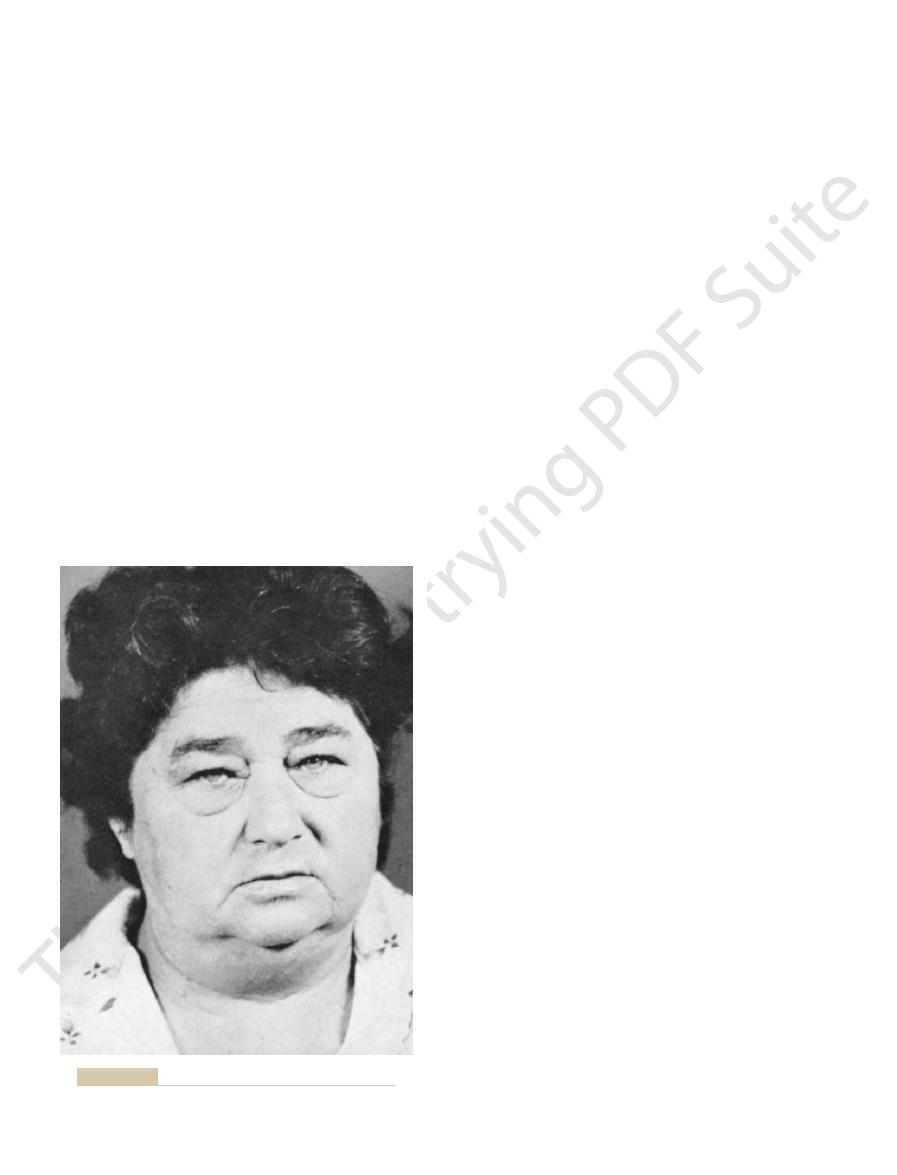
breathing, inducing a characteristic guttural breathing
with cretinism an obese, stocky, and short appearance.
tissues are likely to enlarge excessively, giving the child
a result of this disproportionate rate of growth, the soft
teristically more inhibited than is soft tissue growth. As
mental powers.
retardation of the growth, branching, and myelination
growth remains permanently retarded. This results from
tinism is treated within a few weeks after birth, mental
normal return of physical growth, but unless the cre-
Treatment of the neonate with cretinism at any time
neonate’s movements become sluggish and both physi-
mother while in utero, but a few weeks after birth, the
have cretinoid tendencies.
in the diet, and whole populaces of an endemic geo-
tinism varies greatly, depending on the amount of iodine
). The severity of endemic cre-
genetic defect of the gland, or from iodine lack in the
), from failure of the
mental retardation. It results from congenital lack of a
fetal life, infancy, or childhood. This condition is char-
their 90s after treatment for more than 50 years.
thyroxine. Furthermore, proper treatment of the
more than 1 month. Consequently, it is easy to maintain
of thyroxine on the basal metabolic rate, demonstrating
Figure 76–4 shows the effect
Treatment of Hypothyroidism.
50. And the secretion of
ranges between
the blood is low. The basal metabolic rate in myxedema
site results in hypothyroidism. The free thyroxine in
The tests already
Diagnostic Tests in Hypothyroidism.
in turn results in peripheral vascular disease, deafness,
those with myxedema, develop atherosclerosis, which
Therefore, many hypothyroid patients, particularly
is usually associated with increased atherosclerosis.
cholesterol in the bile. The increase in blood cholesterol
As pointed out earlier,
the nonpitting type.
the excess fluid, it is mainly immobile, and the edema is
interstitial fluid to increase. Because of the gel nature of
interstitial spaces, and this causes the total quantity of
condition, for reasons not explained, greatly increased
under the eyes and swelling of the face. In this
76–9 shows such a patient, demonstrating bagginess
almost total lack of thyroid hormone function. Figure
Myxedema
cases, development of an edematous appearance
development of a froglike husky voice, and, in severe
weight, constipation, mental sluggishness, failure of
decreased blood volume, sometimes increased body
ness, slowed heart rate, decreased cardiac output,
up to 12 to 14 hours a day, extreme muscular sluggish-
942
Unit XIV
Endocrinology and Reproduction
include fatigue and extreme somnolence with sleeping
many trophic functions in the body evidenced by
depressed growth of hair and scaliness of the skin,
throughout the body called myxedema.
Myxedema.
develops in the patient with
quantities of hyaluronic acid and chondroitin sulfate
bound with protein form excessive tissue gel in the
Atherosclerosis in Hypothyroidism.
lack of thyroid hormone increases the quantity of blood
cholesterol because of altered fat and cholesterol
metabolism and diminished liver excretion of
and coronary artery disease with consequent early
death.
described for diagnosis of hyperthyroidism give oppo-
-30 and -
TSH by the anterior pituitary when a test dose of
TRH is administered is usually greatly increased
(except in those rare instances of hypothyroidism
caused by depressed response of the pituitary gland to
TRH).
that the hormone normally has a duration of action of
a steady level of thyroid hormone activity in the body
by daily oral ingestion of a tablet or more containing
hypothyroid patient results in such complete normality
that formerly myxedematous patients have lived into
Cretinism
Cretinism is caused by extreme hypothyroidism during
acterized especially by failure of body growth and by
thyroid gland (congenital cretinism
thyroid gland to produce thyroid hormone because of a
diet (endemic cretinism
graphic iodine-deficient soil area have been known to
A neonate without a thyroid gland may have normal
appearance and function because it was supplied with
some (but usually not enough) thyroid hormone by the
cal and mental growth begin to be greatly retarded.
with adequate iodine or thyroxine usually causes
of the neuronal cells of the central nervous system at
this critical time in the normal development of the
Skeletal growth in the child with cretinism is charac-
Occasionally the tongue becomes so large in relation to
the skeletal growth that it obstructs swallowing and
that sometimes chokes the child.
Patient with myxedema. (Courtesy Dr. Herbert Langford.)
Figure 76–9

mones. Annu Rev Physio 62:439, 2000.
Zhang J, Lazar MA: The mechanism of action of thyroid hor-
hormone action. Physiol Rev 81:1097, 2001.
Yen PM: Physiological and molecular basis of thyroid
molecular specificity. Physiol Rev 82:923, 2002.
hormone receptor interactions: physiological flexibility by
Vasudevan N, Ogawa S, Pfaff D: Estrogen and thyroid
87:5385, 2002.
autoimmune thyroid disease. J Clin Endocrinol Metab
Vaidya B, Kendall-Taylor P, Pearce SH: The genetics of
function. Endocr Rev 24:694, 2003
disease susceptibility genes: from gene mapping to gene
Tomer Y, Davies TF: Searching for the autoimmune thyroid
Physiol Rev 82:473, 2002.
hormone receptor structure-function relationships.
Thyroid-stimulating hormone and thyroid-stimulating
Szkudlinski MW, Fremont V, Ronin C, Weintraub BD:
2:195, 2002.
models of cell death in autoimmunity. Nat Rev Immunol
Stassi G, De Maria R: Autoimmune thyroid disease: new
clinical implications. Ann Intern Med 139:205, 2003.
Silva JE: The thermogenic effect of thyroid hormone and its
793, 2004.
Roberts CG, Ladenson PW: Hypothyroidism. Lancet 363:
J Med 348:2646, 2003.
Pearce EN, Farwell AP, Braverman LE: Thyroiditis. N Engl
ment. BMJ 320:1332, 2000.
O’Reilly DS: Thyroid function tests—time for a reassess-
Physiol Cell Physiol 279:C1295, 2000
pathways in the control of thyroid hormone release. Am J
Marino M, McCluskey RT: Role of thyroglobulin endocytic
phia: WB Saunders Co, 2003.
Williams Textbook of Endocrinology, 10th ed. Philadel-
Larsen PR, Kronenberg HM, Melmed S, Polonsky KS:
medical significance. Endocr Rev 24:48, 2003.
Symporter (NIS):
characterization,
regulation,
and
Dohan O, De La Vieja A, Paroder V, et al: The sodium/iodide
357:619, 2001.
Dayan CM: Interpretation of thyroid function tests. Lancet
roid pathophysiology. Physiol Rev 80:1083, 2000.
sodium/iodide symporter: impact on thyroid and extrathy-
De La Vieja A, Dohan O, et al: Molecular analysis of the
Cooper DS: Hyperthyroidism. Lancet 362:459, 2003.
Endocrinol Metab 89:1526, 2004.
Burger AG: Environment and thyroid function. J Clin
Science, 2002.
Endocrinology, 3rd ed. Philadelphia: Mosby, Elsevier
Besser GM,
Thorner MO:
Comprehensive Clinical
Chapter 76
Thyroid Metabolic Hormones
943
References
